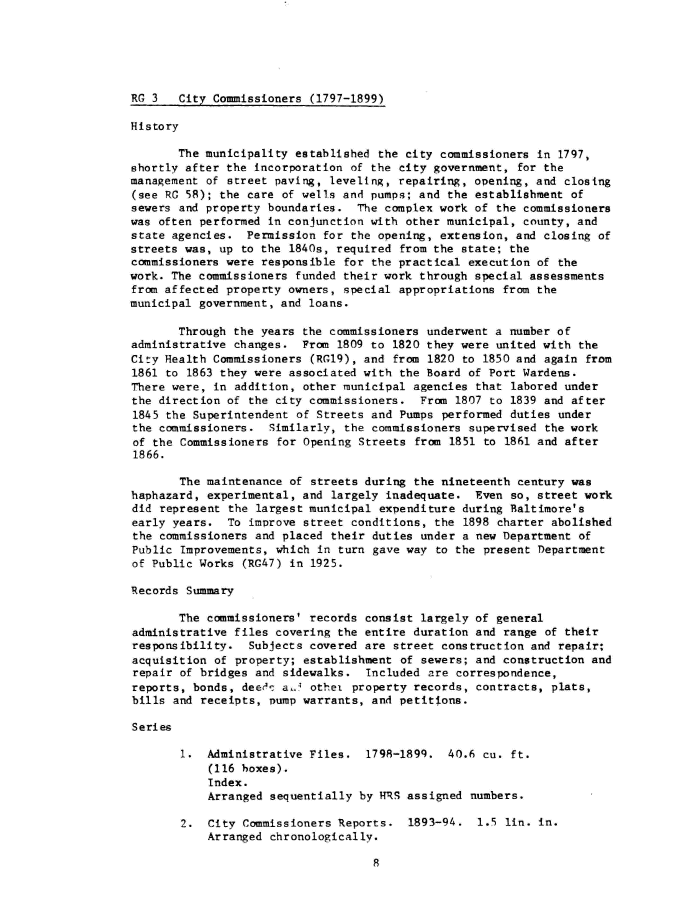|
RG 3 City Commissioners (1797-1899)
History
The municipality established the city commissioners in 1797,
shortly after the incorporation of the city government, for the
management of street paving, leveling, repairing, opening, and closing
(see RG 58); the care of wells and pumps; and the establishment of
sewers and property boundaries. The complex work of the commissioners
was often performed in conjunction with other municipal, county, and
state agencies. Permission for the opening, extension, and closing of
streets was, up to the 1840s, required from the state; the
commissioners were responsible for the practical execution of the
work. The commissioners funded their work through special assessments
from affected property owners, special appropriations from the
municipal government, and loans.
Through the years the commissioners underwent a number of
administrative changes. From 1809 to 1820 they were united with the
City Health Commissioners (RG19), and from 1820 to 1850 and again from
1861 to 1863 they were associated with the Board of Port Wardens.
There were, in addition, other municipal agencies that labored under
the direction of the city commissioners. From 1807 to 1839 and after
1845 the Superintendent of Streets and Pumps performed duties under
the commissioners. Similarly, the commissioners supervised the work
of the Commissioners for Opening Streets from 1851 to 1861 and after
1866.
The maintenance of streets during the nineteenth century was
haphazard, experimental, and largely inadequate. Even so, street work
did represent the largest municipal expenditure during Baltimore's
early years. To improve street conditions, the 1898 charter abolished
the commissioners and placed their duties under a new Department of
Public Improvements, which in turn gave way to the present Department
of Public Works (RG47) in 1925.
Records Summary
The commissioners' records consist largely of general
administrative files covering the entire duration and range of their
responsibility. Subjects covered are street construction and repair;
acquisition of property; establishment of sewers; and construction and
repair of bridges and sidewalks. Included are correspondence,
reports, bonds, dee^<: a^ othei property records, contracts, plats,
bills and receipts, pump warrants, and petitions.
Series
Administrative Files. 1798-1899. 40.6 cu. ft.
(116 boxes).
Index.
Arranged sequentially by HRS assigned numbers.
City Commissioners Reports. 1893-94. 1.5 lin. in.
Arranged chronologically.
|

